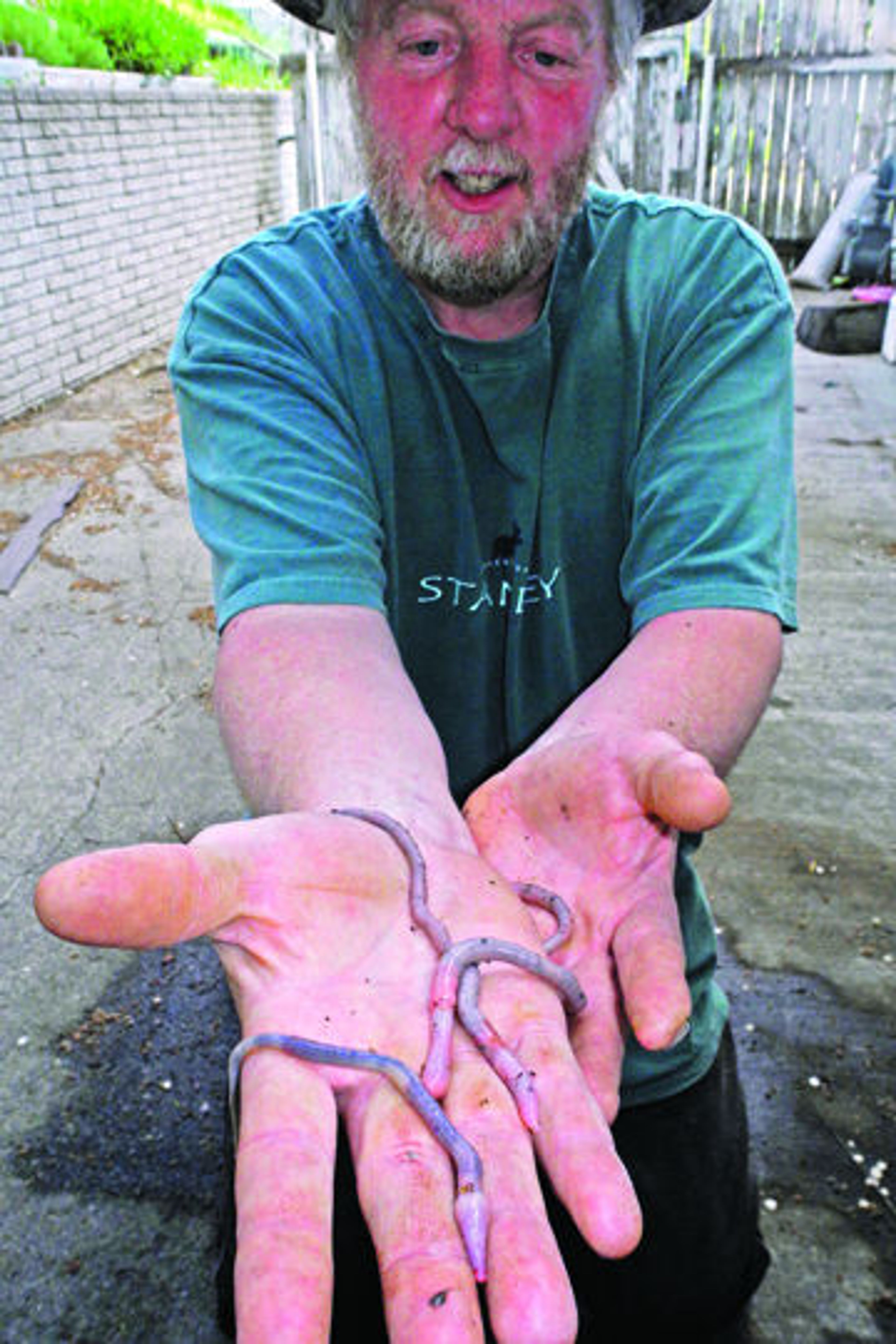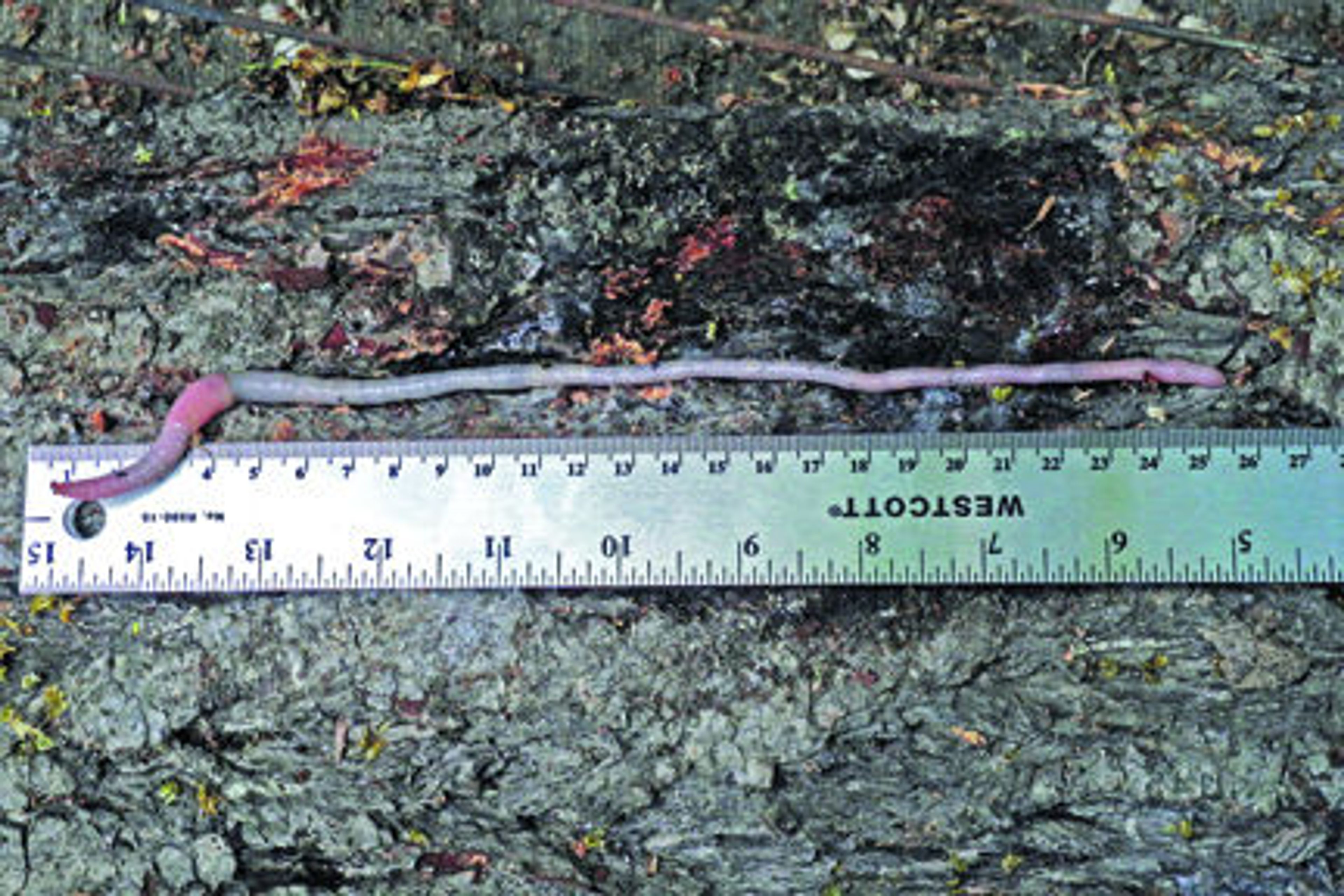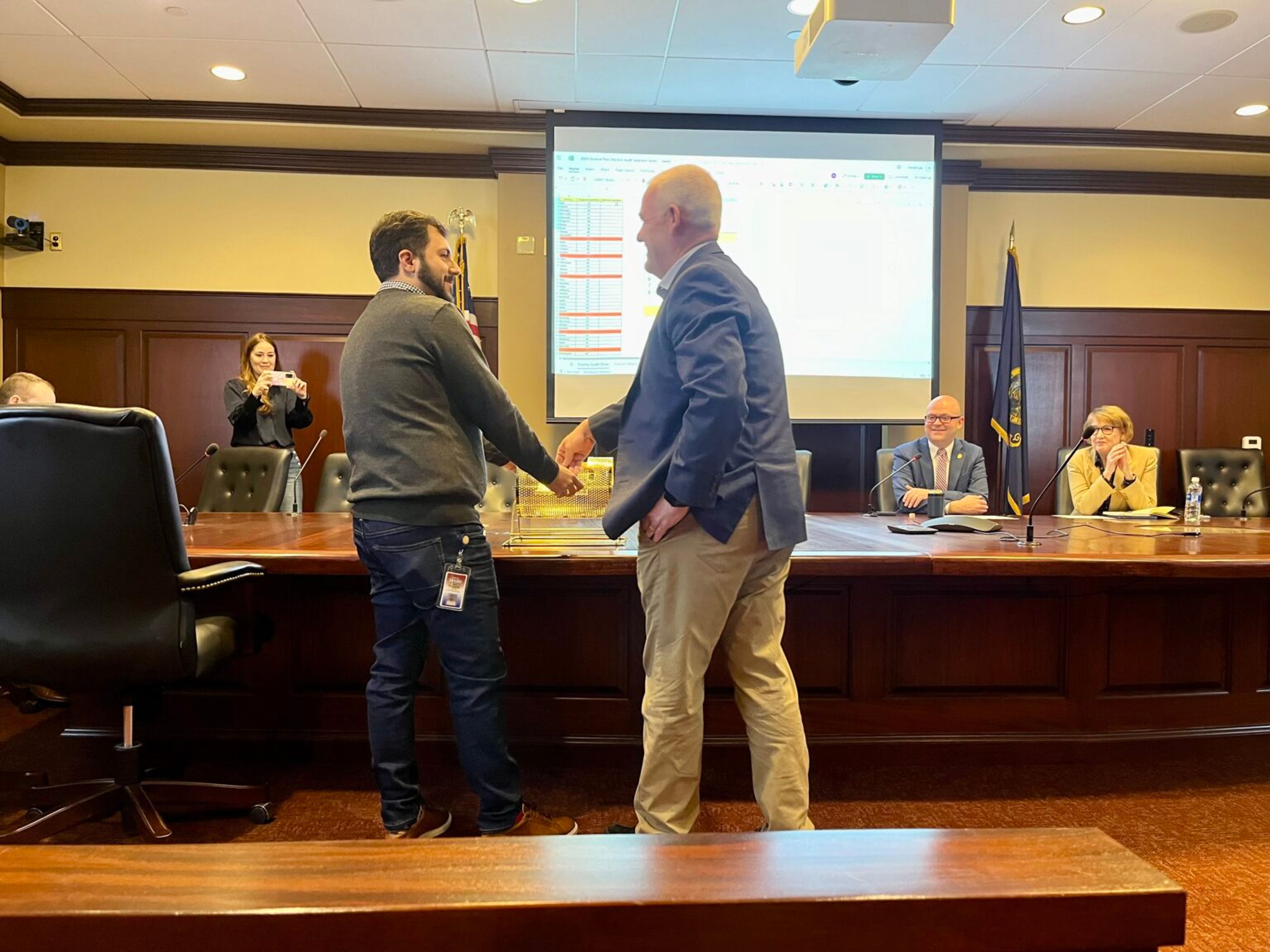Cass Davis of Moscow is establishing himself as the world's foremost collector of the extremely rare giant Palouse earthworm.
The Paradise Ridge resident recently found three specimens that University of Idaho researchers said are likely to be confirmed as the species.
"It's more than likely a giant Palouse earthworm, but we can't confirm that until we do the genetic analysis," said Chris Baugher, a UI doctoral candidate studying the species.
Davis found two of the worms in 2012. He found three more last weekend, one each over three consecutive days, while hiking along Paradise Ridge Road. The worms are believed capable of growing to 1 meter in length, although recent finds have averaged 12 inches long.
"I'm always looking for more specimens, and this year I found one every day right after the thunderstorms," he said. "They either rose to the surface or are washing out on the road."
The worms, which are native to the Palouse Prairie, were once thought to be extinct. They were first noted in 1897 but have been found infrequently over the past several decades. A UI researcher unearthed one in 2005. Before that, the worm had not been observed since 1988. More worms were found in 2008 and again in 2010.
Environmental groups unsuccessfully attempted to have the worms protected under the Endangered Species Act. But the U.S. Fish and Wildlife Service said too little is known about the worms and their range to warrant protection.
The decision not to list was a blow for people like Davis. He is among a group fighting to keep U.S. Highway 95 from being rerouted over Paradise Ridge as part of a widening project south of Moscow.
"It's probably too late to have an impact on the highway thing," he said. "I really wish the Fish and Wildlife Service had listed the worm."
But he still thinks finding them is valuable to science. He said the worms and other rare species may be more important than people realize.
"We have no idea what the niche of the giant Palouse earthworm is. It could be essential to a particular plant. Who knows, he could be the cure for cancer, we know nothing about him," he said. "That is why it's so important to take care of threatened and endangered species; they could hold the key to something really important."
Scientists say the worm was likely harmed by the conversion of native prairies to agricultural production and the introduction of nonnative worms from Europe. By and large, recent discoveries of the species have come from remnants of the Palouse Prairie, a habitat type that is itself rare.
"It's really cool that potentially a few more giant Palouse earthworms have been found on the ground surface here in the Palouse," said David Hall of the Palouse Prairie Foundation. "It is important to preserve the habitat in which they live. There are probably few left, and they may have an important role in production of the great soils we have here."
Davis said he will keep looking for more, but he has a more immediate desire to find some nonnative worms.
"Now I have to go find a bunch of night crawlers," he said. "I'm going to Dworshak (Reservoir) this weekend to try to catch a some bass."
---
Barker may be contacted at ebarker@lmtribune.com or at (208) 848-2273. Follow him on Twitter @ezebarker.










